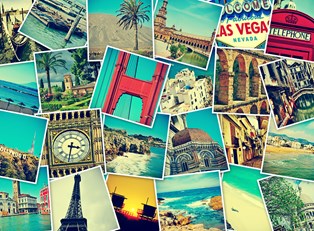Nature photography can be a stunning way to bring people closer to nature and show the beautiful places you've visited that defy simple description. Knowing the right tools and techniques can help you get those breathtaking shots.
Stunning Landscapes
In order to get an amazing landscape, you should really use a tripod. This will give you time to slowly set the shot to get every detail. Use a low aperture, the width of the opening for the lens, to make sure that every detail is caught. Slow shutter speeds, the amount of time it takes to capture the picture, can help you catch even more details, especially if the shot is at night or trying to capture the movement of water.
Detailed Closeups
For detailed closeups, you will want almost the opposite settings. A high aperture number will allow you to capture just the subject of the picture, while the rest fades into an artfully unfocused background. You will probably want to hold the camera, rather than use the tripod, to catch the best angle and should use a slightly faster shutter speed to prevent blurring in your picture.
The Right Lighting
Lighting is everything in photography, and nature photography often has some strong bright light to content with. Faster shutter speeds and high aperture numbers will help prevent the scene from looking washed out. If you are dealing with a dark, overcast day, use the opposite settings. Try to shoot either in the early morning or close to sunset to get the best quality lighting for nature photography.
Catching Wildlife
Whether it's a bee landing lightly on a flower or a couple of fox kits tumbling together in the field, wildlife makes for compelling and dynamic photography. The only problem is getting the shot. Animals and insects move unpredictably, so use a fast shutter speed to ensure you catch all the action. Using burst mode, in which the camera takes several pictures immediately after each other when you press the shutter button, can help make sure you capture just the right moment.
Wildlife nature photography will often require you to be patient or lucky. Try setting up somewhere you know the animals are likely to come. If you have an SLR camera, a lens with a significant zoom will allow you to catch shots that may have been too far away for other photographers.
Practice With the Mundane
As with all things photography, experimenting is the best way to learn. If you are concerned about your skills on a future trip, start practicing around your home. Try taking close ups and landscape shots of people's gardens, local parks, and nearby wildlife like sparrows or squirrels. The skills you learn on these more everyday subjects will transfer to the more majestic landscapes and unusual animals you will find in your travels.
Like all photography, nature photography is an art. The more you experiment, the more you will learn how to get the look that appeals most to you.



